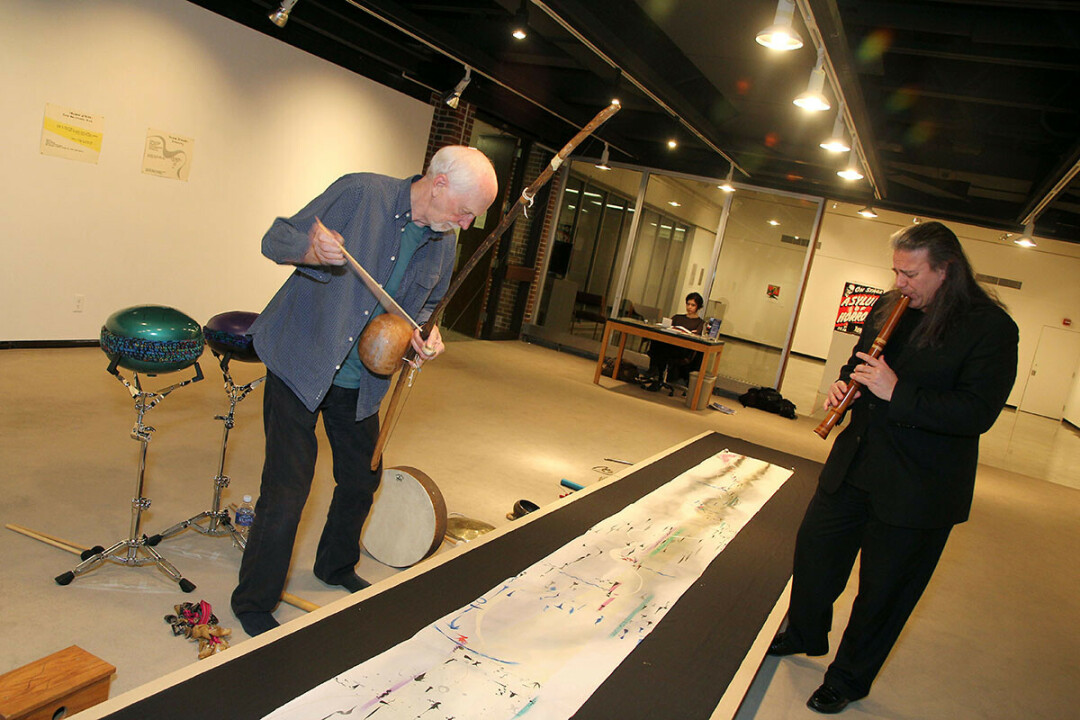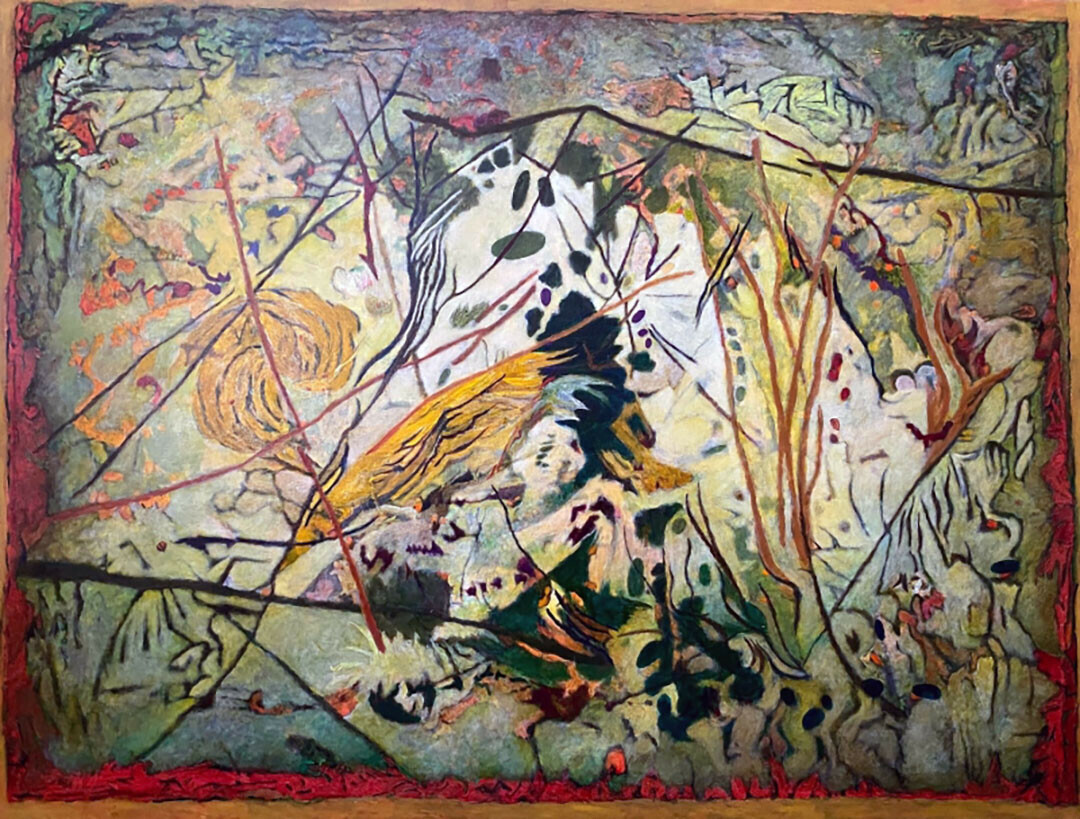Reading the Visual World: A Conversation with Tiit Raid
looking back at a 2006 interview with the E.C. artist, who died Aug. 28
Patti See, photos by Andrea Paulseth |

Eau Claire artist Tiit Raid died on Aug. 28, 2022, at home in his studio, surrounded by the people and things he loved. He was working on selecting paintings for his final show, to be held at the Pablo Center at the Confluence in early 2023. What follows is a “conversation” with the artist, which appeared in this magazine in 2006. It’s been tweaked for current readers.
Tiit Raid has been painting full time since retiring from UW-Eau Claire’s Art Department in 2002. In 2006, he was featured in the prestigious American Artist Watercolor Magazine.
From 1974 to 2017, Tiit and his wife, Ann, lived on the banks of Fall Creek, where he’s a local legend. Years ago, I drove through town and stopped at a gas station to ask about the art show opening. “Oh, you mean Tiit,” the gal behind the counter told me. He obviously was the artist in town. In that venue, more church basement than gallery, or in Thomas Barry Fine Arts, Raid’s work is spectacular. The couple moved to Eau Claire about five years ago.
When I attended his opening at Thomas Barry, housed in an unpretentious building in downtown Minneapolis, I wouldn’t have found it, except for Tiit’s directions: just across from the Loon Café. Viewing his work were almost four decades worth of colleagues, former students, old neighbors, high school friends, strangers, and urban artists with haircuts that haven’t yet made it to the Chippewa Valley. Even the guy who used to sweep the parking lot at Kerm’s and gave Tiit and Ann directions to the drive-in theater the summer they moved to Eau Claire in 1967 showed up. If Raid’s paintings were poems, these are the details they’d convey: it’s his seeing what stands out in the world around him that draws you in to his work and keeps you looking.

His Minneapolis show was made up of panoramic paintings that are an average of 6 inches by 2 1/2 feet, part of what one friend calls “Tiit’s long and skinny period.” This new series is based on reflections on water – a dam, a barn, a stand of trees, a shoreline – whatever he finds from his most common vantage point: his kayak or even simply the view from his Fall Creek backyard. Raid bases his paintings on photos he takes, sometimes combining prints to create one painting. His technique of alternating varnish and paint many times throughout the process and his selection of color relationships make the colors deeper, more lush, vibrant, off the page. Often it isn’t until reading the paintings’ titles that the subject matter becomes clear. Raid sees shades of purple and chartreuse in the ripples of Fall Creek Pond, which of course are there, if only one pays attention.
Raid first considered becoming an artist back in the fifth grade in 1952, so he’s been “making images” for over seven decades. This is what he learned:
How do you decide what to photograph and choose which of those become paintings?
I don’t have anything particular in mind when I go out for my kayak rides. I’m simply looking at what is there. And what attracts my attention determines what I photograph. I seem to work best when I don’t have a preconceived notion in mind about what I want to do. It’s kind of like what Picasso talked about when he said, “I don’t seek, I find.”

Which artists most influenced you?
Everything you see and experience becomes an influence. The Swiss-German artist Paul Klee is an early and continuing influence in two very important respects: inventing as you go and developing observational skills – looking long at the appearance of your surroundings. From Wassily Kandinsky I learned about the intuitive process and the relationship of art to music, and this has also been an influence on how I approach my painting and playing of music. In a certain way, I think of my paintings as musical.
What is your best advice for a young artist?
A great idea alone has never painted a great painting or written a moving poem. So the first thing I would advise is to spend a lot of time observing the visual world we see around us every day. And not to evaluate it … but simply look at it ... beyond words and labels … the visual world can be “read” without words and intellectual explanations. Ideas for paintings will come from this observation.
The arts is a great place to give one’s inward voice the free hand. I’ve learned that my paintings tend to be more interesting when I allow my intuition to guide every action. Today’s observation becomes tomorrow’s intuition … so, constantly work to develop your observational skills and trust your instincts until you learn otherwise. And, never assume that you know or see well enough.























